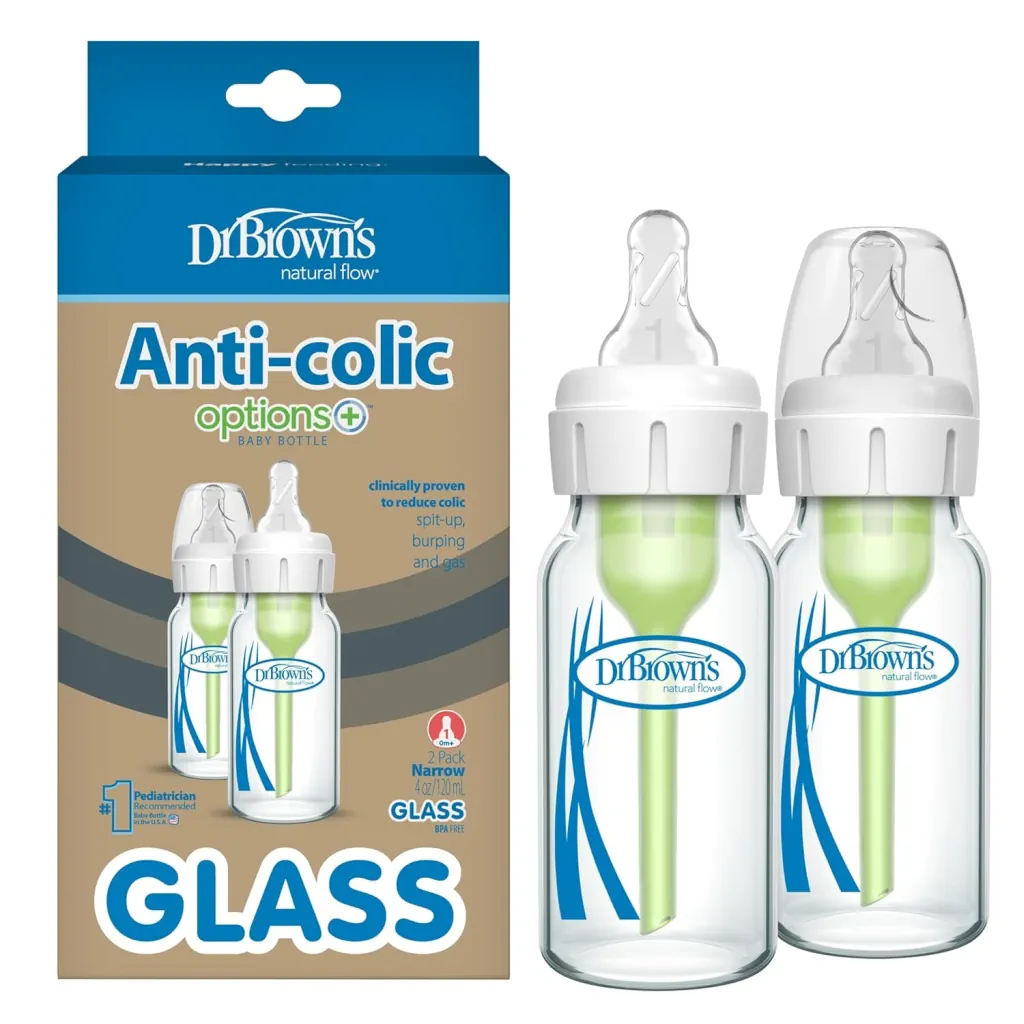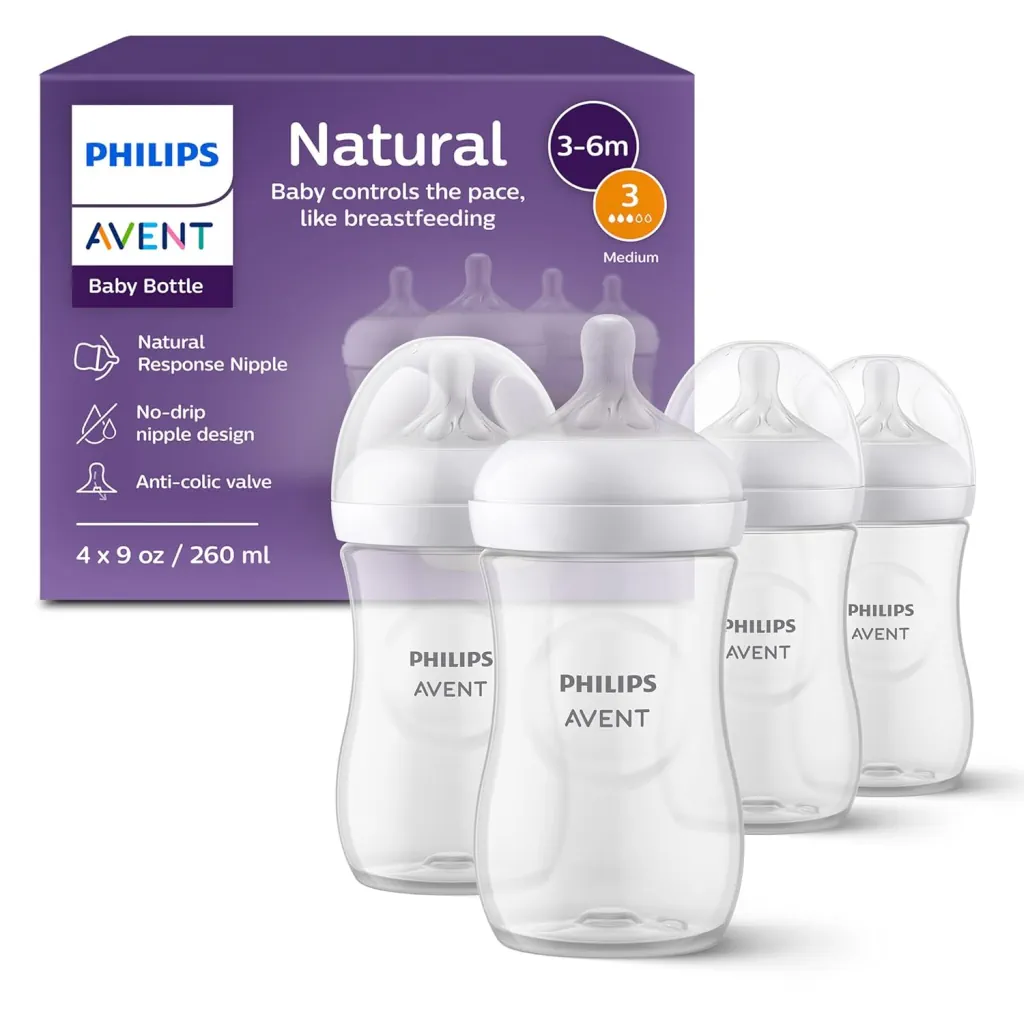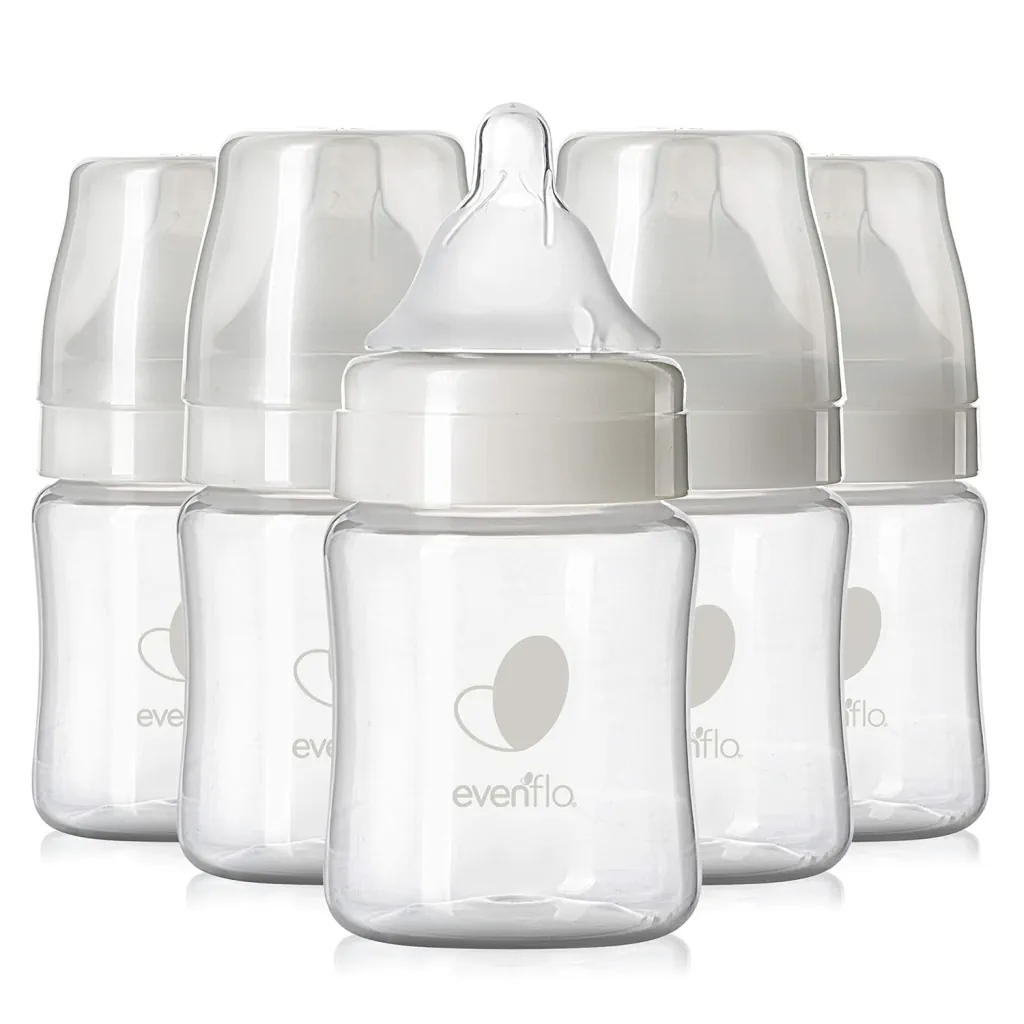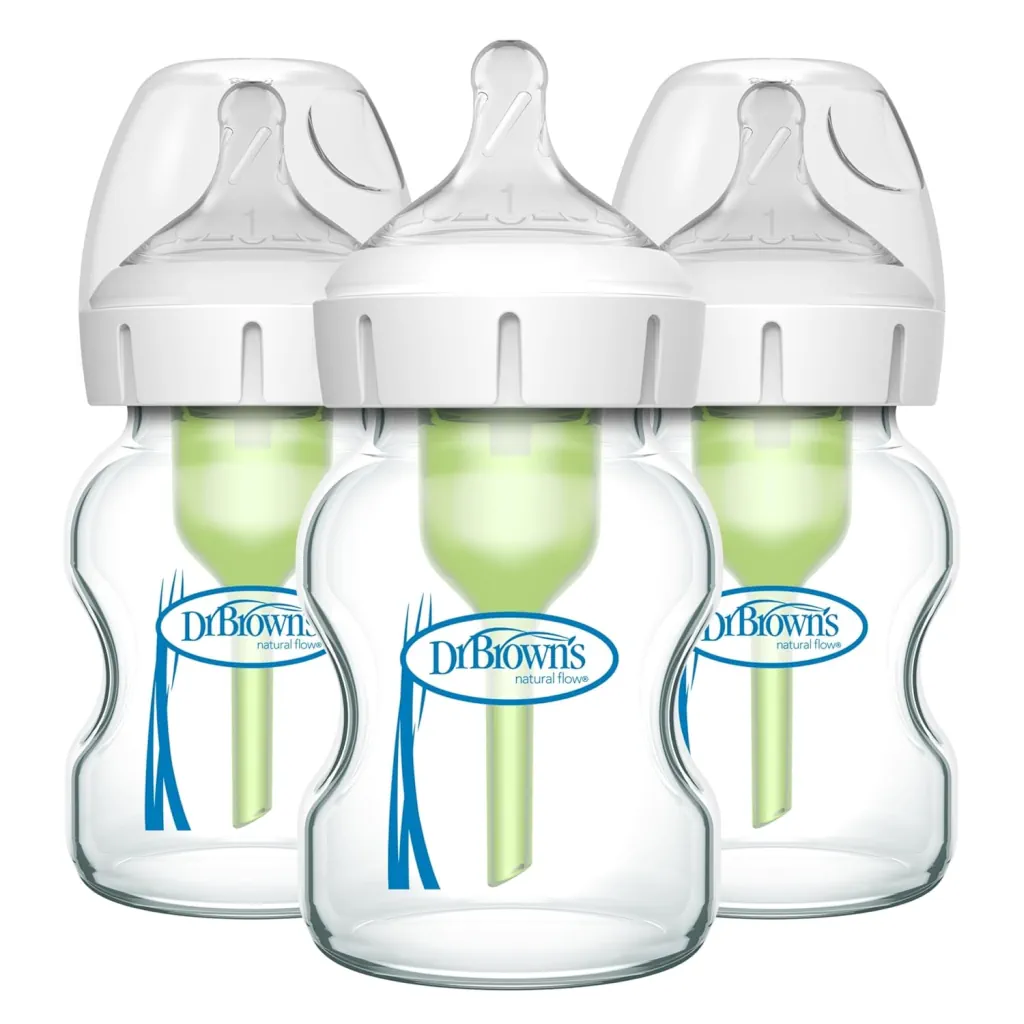Why Glass Baby Bottles Are Gaining Popularity
Glass baby bottles have made a strong comeback in 2025, driven by growing concerns about chemical exposure, environmental sustainability, and infant health. More parents than ever are seeking safer, more durable, and eco-conscious alternatives to plastic feeding bottles. Glass bottles offer a timeless, hygienic, and toxin-free solution that appeals to health-conscious families.
This in-depth guide will explore everything you need to know about glass baby bottles, including how they compare to other materials, safety benefits, cleaning tips, and the top-selling models on the market—each trusted by thousands of parents worldwide.
What Are Glass Baby Bottles Made Of?
Glass baby bottles are most commonly made of borosilicate glass, a type of glass known for its high thermal resistance and durability. This material is resistant to cracking from temperature fluctuations and does not leach any chemicals into breast milk or formula.
Unlike plastic, which can degrade over time and release microplastics or other harmful substances, glass is inert and stable. This ensures that what your baby drinks is pure and unaltered. Most reputable manufacturers now use laboratory-grade borosilicate glass for added safety and performance.
In addition, many glass bottles are designed with ergonomic features such as wide necks, measurement markings, and silicone sleeves that improve grip and reduce the risk of breakage.
Key Benefits of Using Glass Baby Bottles
1. Chemical-Free Feeding: Glass does not contain BPA, phthalates, PVC, or other chemicals found in many plastic products. This makes it one of the safest materials for feeding infants.
2. Durability: Although glass may seem fragile, borosilicate glass is surprisingly strong and can withstand minor drops, boiling, and sterilization without degrading.
3. Easy to Clean: Glass bottles resist stains and odors, and they can be safely cleaned in the dishwasher or boiled. Unlike plastic, they don’t retain smells or discolor over time.
4. Eco-Friendly: Glass is 100% recyclable and reusable, making it an excellent choice for environmentally conscious families.
5. Aesthetic Appeal: Many parents appreciate the clarity and design of glass bottles, which often look more elegant and are easier to inspect for cleanliness.
Potential Drawbacks to Consider
Despite their advantages, glass baby bottles have a few considerations:
- Weight: Glass bottles are heavier than plastic ones, which might make them slightly more difficult for younger babies to handle on their own.
- Breakability: Although borosilicate glass is durable, these bottles can still break if dropped from high surfaces onto hard flooring.
- Cost: Glass bottles are generally more expensive upfront, but their longevity often makes them cost-effective in the long run.
- Not Ideal for Travel: Due to their weight and potential for breakage, glass bottles may not be the best choice for on-the-go feeding.
Safety Features and Certifications to Look For
When selecting a glass baby bottle, look for:
- Borosilicate glass construction for thermal shock resistance
- BPA-free and lead-free labeling
- Silicone sleeves for grip and protection
- FDA and EU safety certifications
- Anti-colic nipple systems to reduce gas and discomfort
Most modern glass baby bottles meet or exceed these standards, making them extremely safe for everyday use.
Top Glass Baby Bottles in 2025: Expert Recommendations
Here are five top-selling glass baby bottles on Amazon in 2025, each with thousands of positive reviews and trusted performance.
1. Dr. Brown’s Natural Flow Anti-Colic Options+ Narrow Glass Baby Bottle, 4 oz (2 Pack)

- ⭐ 4.7 out of 5 stars (13.3K reviews)
- ✅ Anti-colic internal vent system
- ✅ Slow flow Level 1 nipple
- ✅ Dishwasher and sterilizer safe
- 🔗 See price on Amazon
This bottle is perfect for newborns, combining glass purity with anti-colic features. Its narrow design is easy to hold, and the included vent system helps reduce gas and spit-up.
2. Dr. Brown’s Natural Flow Anti-Colic Options+ Wide-Neck Glass Baby Bottles, 5 oz (3 Pack)

- ⭐ 4.6 out of 5 stars (11.7K reviews)
- ✅ Wide-neck design for easy filling and cleaning
- ✅ Level 1 nipple included
- ✅ Vent system included for reduced colic
- 🔗 See price on Amazon
Ideal for parents looking for a wider nipple and easier milk transfer. This version offers more volume and is favored for babies who are transitioning to faster flows.
3. Philips Avent Natural Baby Bottles with Natural Response Nipples, 9 oz (4 Pack)

- ⭐ 4.8 out of 5 stars (19.6K reviews)
- ✅ Mimics natural breastfeeding
- ✅ Medium Flow (Flow 3)
- ✅ Ergonomic design
- 🌱 1 sustainability certification
- 🔗 See price on Amazon
These bottles provide an excellent option for combination feeding. The natural response nipple is designed to release milk only when the baby actively drinks, just like the breast.
4. Evenflo Feeding Premium Proflo Venting Balance Plus, 5 oz (6 Pack)

- ⭐ 4.5 out of 5 stars (1.2K reviews)
- ✅ Developed by pediatric feeding specialists
- ✅ Wide neck, vented for better flow
- ✅ Affordable multi-pack
- 🔗 See price on Amazon
A great starter set for new parents, offering both quality and value. Pediatric-designed nipples promote healthy latch and reduce gas.
5. Evenflo Feeding Premium Proflo Venting Balance Plus, 9 oz (6 Pack)

- ⭐ 4.5 out of 5 stars (1.7K reviews)
- ✅ Ideal for older infants
- ✅ Colic-reducing ventilation
- ✅ Affordable and practical
- 🔗 See price on Amazon
A larger-capacity option for growing babies, this bottle supports longer feeding sessions and helps maintain comfort with built-in venting.
How to Clean and Sterilize Glass Baby Bottles
Glass baby bottles are easy to clean using the following methods:
- Dishwasher: Place on the top rack with nipples and lids in a mesh basket.
- Boiling: Submerge in boiling water for 5 minutes to sterilize.
- Steam sterilizers: Compatible with most models on the market.
Always check bottles for chips or cracks before use. Replace nipples regularly, especially when they show signs of wear.
When Should You Choose Glass Over Plastic?
Choose glass baby bottles if:
- You prioritize chemical-free, non-toxic feeding
- You primarily feed your baby at home
- You want bottles that last for multiple children
- You care deeply about sustainability and reducing plastic waste
Use plastic bottles if:
- You travel often and need lightweight, break-resistant bottles
- Your baby can feed independently and prefers a lighter design
- You’re working with a tight budget and want affordable options
Many families find it helpful to use both glass and plastic bottles depending on the situation. For example, glass bottles for home use and plastic for outings.
FAQs About Glass Baby Bottles
Are glass bottles safe for newborns?
Yes, glass bottles are safe and highly recommended for newborns due to their chemical stability and cleanliness.
What if a glass bottle breaks?
Use bottles with silicone sleeves to minimize breakage risk. Always inspect before use.
Can I use glass bottles with warmers and sterilizers?
Yes, most glass bottles are compatible with modern warmers and sterilizers.
Do glass bottles work with breast pumps?
Many glass bottles are compatible with popular breast pumps, especially those with standard-sized necks.
Are they worth the cost?
Absolutely. While the initial price is higher, glass bottles last longer and offer peace of mind in terms of safety and hygiene.
Conclusion: Are Glass Baby Bottles Right for You?
Glass baby bottles offer unmatched purity, durability, and eco-conscious benefits. In 2025, parents are more informed than ever—and many are choosing glass for its chemical safety, longevity, and sustainability. While heavier and more expensive than plastic, the trade-offs are well worth it for families focused on health and quality.
Whether you choose one of the Dr. Brown’s models, Philips Avent, or Evenflo’s glass lineup, each option listed above offers superior performance and trusted feedback from thousands of satisfied parents.
Make the switch to glass, and enjoy peace of mind knowing you’re feeding your baby the safest way possible.
This article contains affiliate links. If you make a purchase through them, we may earn a small commission at no additional cost to you.
Note: This article is for informational purposes only and is not a substitute for professional advice. While every effort has been made to ensure that the content is accurate and useful, the portal does not guarantee the complete accuracy of all information. For specific cases and personalized solutions, we recommend consulting with a licensed professional in the relevant field.
